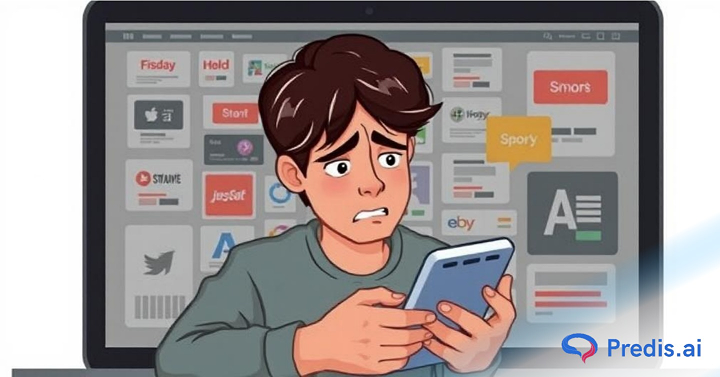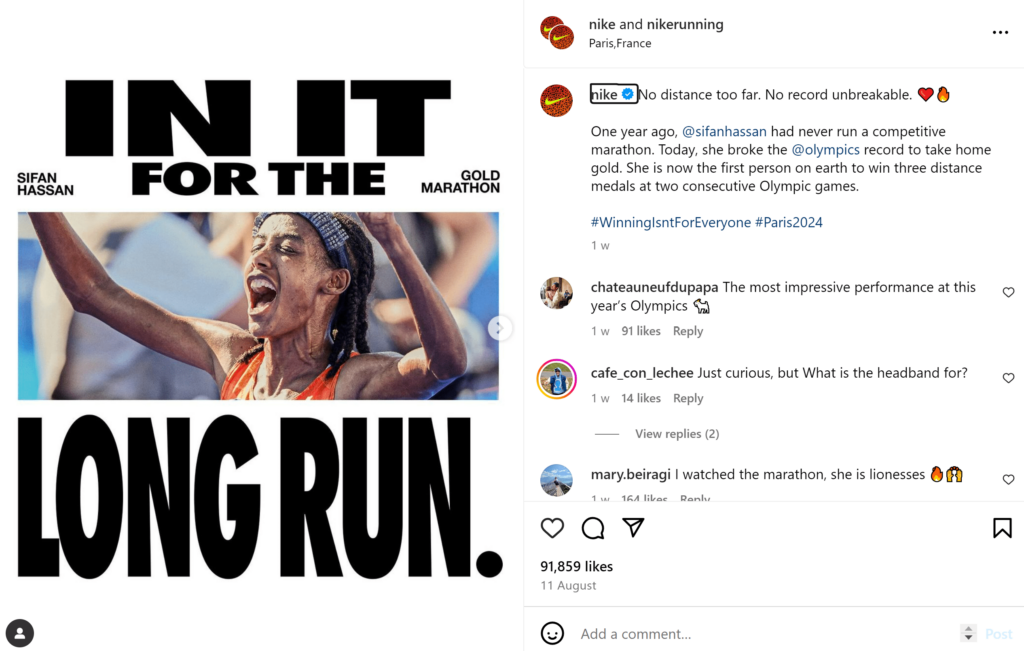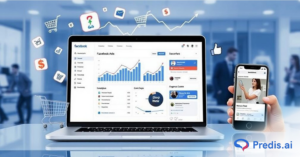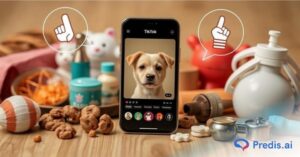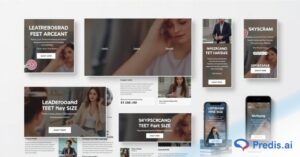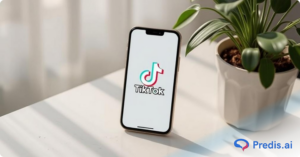As digital advertising continues to evolve, so do the challenges marketers face in capturing and retaining audience attention. One of the most pressing issues is ad fatigue.
But what is ad fatigue exactly? In this comprehensive guide, we’ll explore ad fatigue, how to identify it, and effective strategies to reduce its adverse impact on your ad campaigns.
What is Ad Fatigue?
Ad fatigue occurs when your audience becomes overly exposed to the same advertisement, leading to a decline in engagement and effectiveness.
According to Kindness in Advertising Report by WunderKIND, a worrying 91% of people find social media ads highly intrusive.
As people see the same ad repeatedly, they start to ignore it, causing a drop in click-through rates (CTR) and conversions. Essentially, your ad loses its impact, and your ad budget is wasted on uninterested viewers.
How to Identify Ad Fatigue
Recognizing ad fatigue early is crucial to maintaining the effectiveness of your ad campaigns. Here are some common signs:
1. Decline in CTR
One of the most evident signs of fatigue is a steady decline in CTR. If your ad initially performed well but now shows a decreasing trend in clicks, it may be time to refresh your creative.
2. Decrease in Conversion Rates
A drop in conversion rates, even when CTR remains stable, can indicate that users are seeing your ad but are no longer motivated to take action.
3. Increase in Cost Per Click (CPC)
As your ad becomes less engaging, platforms like Google Ads or Facebook Ads may increase your CPC to reach the same audience. This can lead to inefficient use of your ad budget.
4. Negative Feedback
Receiving negative feedback or an increase in ad reports can be a sign that your audience is tired of seeing your ad repeatedly.
How to Minimize Ad Fatigue
Reducing ad fatigue is essential for maintaining the efficiency of your ad campaign. Here are several strategies to help you keep your ads fresh and engaging:
1. Rotate Ad Creative
Regularly updating your ad creative is one of the most effective ways to decrease fatigue. Experiment with different visuals, headlines, and calls to action (CTAs) to keep your audience interested.
Example: If you are running a clothing ad, rotate between different models, outfits, and settings. Instead of showing the same dress on the same model in the same backdrop, vary the colors, styles, and contexts.
2. Use Audience Segmentation
Segmenting your target audience allows you to tailor your ads to different groups, reducing the possibility of any single group experiencing ad fatigue. By customizing your message to specific demographics, interests, or behaviors, you can maintain engagement levels.
Example: A fitness brand can create separate ads for different audience segments such as gym-goers, yoga enthusiasts, and runners, each highlighting products relevant to their interests.
3. Implement Frequency Caps
Frequency caps limit the number of times an individual sees your ad within a given timeframe. This helps prevent overexposure and keeps your audience from becoming weary of your message.
Example: Set a frequency cap of three impressions per week for each user to ensure your ad does not appear too frequently to the same person.
4. Test Different Ad Formats
Variety is key in addressing user fatigue in social media advertising. Testing different ad formats, such as video, carousel, and interactive ads, can provide a fresh experience for your audience. Each format engages users in different ways, reducing the chance of fatigue.
Example: A restaurant can use carousel ads to showcase different dishes, video ads to highlight the dining experience, and interactive ads to allow users to customize their meals.

5. Optimize Retargeting Ads
Retargeting ads are powerful tools, but they can also contribute to fatigue if not managed properly. Ensure your retargeting efforts are well-timed and relevant, and avoid showing the same ad too frequently.
Example: Instead of bombarding users with the same retargeting ad, create a sequence of ads that guide them through different stages of the buying journey, from awareness to decision-making.
6. Monitor Ad Performance
Continuous monitoring of your ad performance metrics is essential. Use analytics tools to track CTR, conversion rates, CPC, and other key indicators. Early detection of declining performance allows for timely adjustments.
Example: If you notice a drop in CTR for a specific ad, review its performance data to identify potential issues, such as ad fatigue, and adjust your strategy accordingly.
7. Leverage User-Generated Content
Incorporating user-generated content (UGC) into your ads can bring a fresh and authentic perspective. UGC not only diversifies your creative but also builds trust and engagement with your audience.
Example: Encourage satisfied customers to share photos or videos of themselves using your product and feature this content in your ads. This not only refreshes your ad creative but also provides social proof.
8. Implement Creative Testing
Regularly testing different ad creatives helps identify which ones resonate best with your audience. A/B testing different elements of your ads, such as images, copy, and CTAs, can provide valuable insights and help you optimize your campaigns.
Example: Run A/B tests to compare two versions of an ad with different headlines or images. Analyze the results to determine which version performs better and use those insights to refine your ad strategy.
9. Use Seasonal Campaigns
Aligning your ad campaigns with seasonal trends or significant events can help keep your content relevant and engaging. This approach ensures your ads feel timely and fresh, reducing the risk of fatigue.
Example: A retailer can create special campaigns for holidays like Christmas, back-to-school season, or Black Friday, featuring products and promotions relevant to those events.
10. Leverage Interactive Elements
Incorporate interactive elements such as polls, quizzes, or games into your ads to create a more engaging experience. Interactive ads can capture attention and encourage users to spend more time interacting with your content.
Example: A beauty brand can create a quiz to help users find the perfect skincare routine, increasing engagement and providing a personalized experience.
11. Use Dynamic Ads
Dynamic ads automatically personalize content for each user based on their behavior and preferences. This approach ensures that users see ads tailored to their interests, reducing the likelihood of fatigue.
Example: An e-commerce site can use dynamic ads to show users products they’ve previously viewed or related items, making the ad content more relevant and engaging.
12. Refresh Ad Copy Regularly
Just as visuals can cause fatigue, so can repetitive ad copy. Regularly update your ad copy to keep it fresh and interesting.
Example: A travel agency can update its ad copy to highlight different destinations, travel tips, and seasonal offers, ensuring the message stays relevant and engaging.
Use Predis.ai’s AI Advertisement Maker for ads that captivate your audience!
13. Monitor Competitors
Keeping an eye on your competitors’ ads can provide insights into what’s working in your industry. Analyze their strategies and performance to identify opportunities to differentiate your ads and avoid common pitfalls.
Example: If competitors are heavily promoting a specific feature, consider highlighting different benefits or unique selling points to stand out and capture attention.
14. Cross-Channel Advertising
Integrating your advertising efforts across multiple channels can help distribute exposure and keep your audience engaged without overwhelming them on a single platform.
Example: Instead of bombarding users with the same ad on Facebook, spread your campaign across Instagram, Twitter, LinkedIn, and Google Display Network. Each platform can have slightly varied creatives tailored to the respective audience, creating a cohesive yet diversified ad experience.
According to Forbes, Instagram continues to be the fastest-growing social media platform.
15. Storytelling in Advertising
Shifting from a straightforward promotional approach to a storytelling format can create a deeper connection with your audience, making your ads more engaging and less prone to fatigue.
Example: A tech company can create a series of ads that tell the story of a customer’s journey from identifying a problem to finding a solution with their product. This narrative approach keeps users interested in seeing the next part of the story, reducing fatigue.
16. Influencer Collaborations
Partnering with influencers can bring a new voice and fresh perspective to your ad campaigns, helping to cut down fatigue.
Example: A fashion brand can collaborate with popular influencers to create personalized ad content. Each influencer’s unique style and approach can appeal to different segments of your target audience, keeping the content varied and engaging.
17. Cause-Related Marketing
Cause-related marketing involves partnering with a cause or charity to promote social responsibility. Ads that support meaningful causes can resonate more deeply with audiences and maintain higher engagement levels.
By integrating social causes into their advertising strategies, brands can create more compelling and emotionally engaging ads that are less likely to cause fatigue.
Example: A cosmetics brand can create ads that highlight their commitment to cruelty-free products and their support for animal welfare organizations.
18. Sustainable Advertising
As environmental concerns grow, brands that adopt sustainable advertising can appeal to eco-conscious consumers.
By highlighting their commitment to sustainability, brands can create ads that not only promote their products but also align with the values of their target audience, leading to more meaningful engagement and reducing fatigue.
Example: A clothing retailer can promote their use of sustainable materials and eco-friendly manufacturing processes in their ads, appealing to environmentally conscious consumers.
19. Inclusive Advertising
Inclusive advertising ensures that all segments of the audience feel represented and valued. Ads that reflect diversity and inclusivity can build stronger connections and lessen ad fatigue.
Example: A fashion brand can create ads that feature models of different ages, sizes, ethnicities, and abilities, showcasing their commitment to inclusivity.
20. Authenticity and Transparency
Consumers value authenticity and transparency in advertising. Brands that are honest and open in their communications can build trust and diminish fatigue.
Example: A food brand can create ads that showcase their farm-to-table process, highlighting the transparency and quality of their ingredients.
21. Event-Based Marketing
Aligning your ad campaigns with major events can capitalize on the heightened attention and interest these events generate. Event-based marketing ensures your ads are timely and relevant, reducing the likelihood of fatigue by connecting with current events.
Example: A sportswear brand can create ads around major sports events like the Olympics or World Cup, highlighting their products’ relevance to the event.
22. High-Quality Graphics
Using high-quality graphics in your ads can capture attention and convey your message more effectively. High-quality visuals make the ads more attractive and engaging, reducing the chances of fatigue by maintaining user interest.
Example: A gourmet food brand can use high-resolution images and visually appealing graphics to showcase its products in a mouth-watering way.
23. The Scarcity Principle
Using the scarcity principle, which suggests that people are more likely to act when they perceive a limited availability, can drive engagement. By highlighting scarcity, brands can create a sense of urgency, prompting quicker user action and minimizing the probability of fatigue.
Example: An online store can create ads promoting a limited-time sale or exclusive product release, emphasizing the scarcity of the offer.
The Psychological Aspect of Ad Fatigue
Did you know that nearly 31% of consumers use ad blockers as per eMarketer? Understanding the psychological triggers behind ad fatigue can help in crafting more engaging and sustainable ad campaigns.
Listed below are a few psychological insights:
1. The Mere Exposure Effect
While repeated exposure can lead to familiarity and preference for a product, excessive repetition without variation leads to fatigue. Balancing familiarity with novelty is key.
Example: Rotating ad creatives while maintaining core brand elements can keep your ads familiar yet fresh. For instance, maintaining the same color scheme or logo while changing the visuals and copy.
2. Cognitive Load
High cognitive load, caused by complex or cluttered ads, can lead to ad fatigue. Simplifying your ads can help maintain user engagement.
Example: Use clear, concise messaging and minimalistic designs. For a tech product, instead of listing all features, focus on the key benefits with a simple visual and a strong CTA.
3. Emotional Engagement
Ads that evoke strong emotions are less likely to cause fatigue and are more memorable.
Example: A charity organization can create emotionally compelling ads that tell the story of individuals they have helped, fostering a deeper connection and reducing ad fatigue.
Advanced Strategies to Mitigate Ad Fatigue
In addition to the basics of recognizing and combating ad fatigue, there are advanced strategies and nuanced approaches that can help sustain ad performance over the long term. These tactics involve deeper engagement with your audience, leveraging new technologies, and adopting innovative marketing practices.
1. Leverage AI and Machine Learning
Artificial intelligence (AI) and machine learning (ML) technologies can help optimize your ad campaigns by predicting ad fatigue and suggesting timely changes.
Example: AI algorithms can analyze vast amounts of data from your ad campaigns to identify patterns that precede ad fatigue. By understanding these patterns, you can preemptively adjust your ads before performance declines.
Additionally, AI can assist in creating personalized ads tailored to individual user preferences, ensuring higher engagement.
2. Behavioral Targeting
Behavioral targeting involves using data on user behaviors to serve highly relevant ads, ensuring that your audience sees content that aligns with their interests and activities.
Example: An e-commerce site can track user behavior such as items viewed or added to the cart and serve ads highlighting similar products or special offers, increasing the relevance and engagement of the ads.
3. Geotargeting
Geotargeting allows you to deliver ads based on the geographical location of your audience, making the ads more relevant and reducing the chances of fatigue.
Example: A restaurant chain can use geotargeting to promote local specials or new menu items specific to users’ locations, ensuring that the ads are contextually relevant and engaging.
4. Video Sequencing
Video sequencing involves creating a series of video ads that are shown to users in a specific order, building a narrative, or conveying a comprehensive message over time.
Example: An automotive brand can create a video sequence that starts with an introduction to a new car model, followed by videos detailing its features, user testimonials, and finally, a special offer. This approach keeps users engaged with a cohesive story rather than showing the same ad repeatedly.
5. Social Listening
Monitoring social media platforms for mentions and discussions about your brand can provide indirect feedback and insights. Using social listening, brands can identify emerging trends and user sentiments, allowing them to tweak their ad campaigns proactively.
Example: A tech company can use social listening tools to track conversations about their latest product ads, identifying common themes or criticisms.
6. Direct Feedback Mechanisms
Implementing direct feedback mechanisms in your ads can provide real-time insights into user preferences and engagement levels. By collecting and analyzing this feedback, brands can make data-driven adjustments to their ad creatives and strategies, ensuring they remain engaging and relevant.
Example: An e-commerce site can include quick surveys or feedback buttons in their ads, asking users to rate their interest or provide comments.
Future Trends in Counteracting Ad Fatigue
As technology and consumer behavior continue to evolve, staying ahead of future trends is essential in managing ad fatigue.
Some emerging trends are:
1. Personalized Video Ads
With advancements in video technology, personalized video ads are becoming more feasible and effective in maintaining engagement.
Example: Personalized video ads that address users by name and tailor content to their preferences can create a highly engaging and unique experience, reducing the likelihood of ad fatigue.
2. Augmented Reality (AR) and Virtual Reality (VR) Ads
AR and VR technologies offer immersive ad experiences that are highly engaging and less prone to fatigue.
Example: A furniture retailer can use AR ads to allow users to visualize how products would look in their homes, providing an interactive and personalized shopping experience.
3. Voice Search and Voice-Activated Ads
With the rise of voice search, voice-activated ads are gaining traction. These ads offer a hands-free, interactive experience that can reduce fatigue.
Example: An electronics brand can create voice-activated ads that provide information or special offers when users engage with their smart speakers, offering a novel and engaging ad experience.
4. Programmatic Advertising
Programmatic advertising, which uses automated technology to buy and place ads, can optimize ad delivery and cut down fatigue by targeting the right audience at the right time.
Example: Programmatic platforms can dynamically adjust ad frequency and creative based on real-time data, ensuring that users are exposed to the most relevant and engaging ads.
5. Neuromarketing Insights
Neuromarketing, which studies consumers’ sensorimotor, cognitive, and affective responses to marketing stimuli, offers profound insights into creating ads that decrease fatigue.
By using eye-tracking technology, advertisers and neuromarketing companies can determine which elements of an ad capture attention and which parts are ignored. This information can guide the design of future ads to ensure they are both captivating and engaging.
Example: If neuromarketing research reveals that users’ eyes are drawn to bold colors and dynamic movement, a brand can incorporate these elements into their ads to maintain high levels of interest and engagement.
6. Gamification
Incorporating game-like elements into ads can significantly enhance user engagement and reduce ad fatigue. Gamification makes the ad experience interactive and enjoyable, encouraging users to spend more time interacting with the content.
By integrating leaderboards, rewards, and challenges, brands can make their ads feel more like games and less like traditional advertisements, thus reducing the risk of ad fatigue.
Example: A fitness brand could create an interactive ad where users can “build” their ideal workout routine through a series of engaging steps, offering rewards or discounts for participation.
7. Blockchain Technology
Blockchain technology is revolutionizing digital advertising by enhancing transparency, security, and trust. It ensures that ad placements are genuine and that advertisers are reaching their intended audience without fraud.
By using blockchain, a company can ensure that its ads are shown to real users and not bots, which helps maintain the integrity of ad campaigns and reduces wasted ad spend. For businesses looking to implement such solutions, blockchain development services can provide the necessary tools and expertise to build secure and efficient systems.
Example: Blockchain can track ad delivery in real-time, providing detailed insights into ad performance and engagement. Following current blockchain trends, this data can help advertisers optimize their campaigns and keep ad fatigue down.
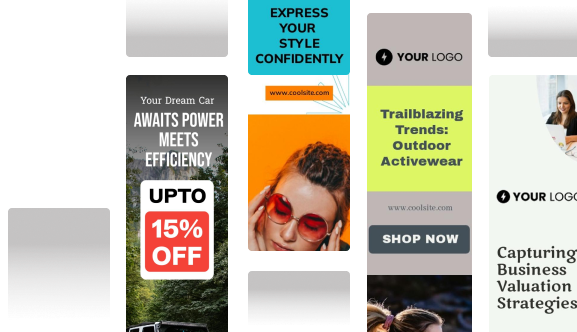
Conclusion
Understanding what is ad fatigue and how to identify and mitigate it is crucial for successful digital advertising.
By recognizing the signs of ad fatigue early and implementing strategies like rotating ad creative, segmenting your audience, and testing different ad formats, you can maintain the effectiveness of your ad campaigns. Keep your audience engaged and make the most of your ad budget to achieve your marketing goals.
By doing so, you’ll not only enhance your ad’s effectiveness but also build stronger connections with your audience, leading to better overall marketing outcomes. Use Predis.ai and never run out of content that resonates deeply with your target audience.
Start by creating your free account today!


